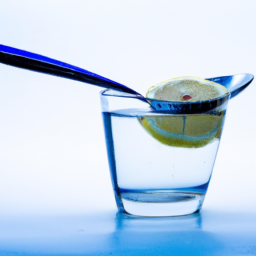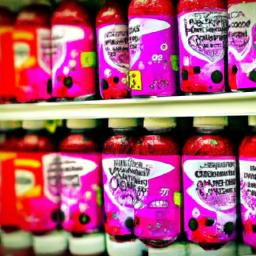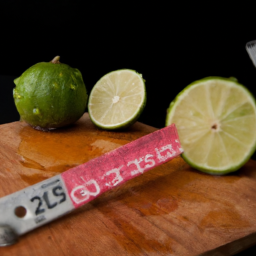Tired of running out of lemons right when you need that tangy kick for your dish? Look no further – citric acid is the ideal substitute.
Citric acid is a natural acid found in many fruits, including lemons, and is commonly used in the food industry as a preservative and flavor enhancer. By using citric acid instead of lemon juice, you can avoid the hassle of constantly buying lemons and have a consistent source of acidity for your cooking and baking needs.
There are many benefits to using citric acid instead of lemon juice. For one, citric acid has a longer shelf life than fresh lemons, making it a more convenient option. Additionally, citric acid has a more neutral flavor than lemon juice, which can be beneficial in recipes where you don’t want the added lemon taste. Plus, using citric acid allows for more precise measuring and consistency in your recipes, ensuring that the acidity level is just right every time.
So, how much citric acid should you use instead of lemon juice? Keep reading to find out.
Types of Citric Acid and Their Properties
Did you know that there are different types of citric acid with varying properties that can affect how much you should use instead of lemon juice in your recipe?
The most common type of citric acid used in cooking is anhydrous citric acid, which is a white crystalline powder. It is highly soluble in water and has a sour taste similar to lemon juice. Anhydrous citric acid is also commonly used as a preservative in food and beverages.
Another type of citric acid is monohydrate citric acid, which is a white crystalline powder that contains one molecule of water for every molecule of citric acid. It is less sour than anhydrous citric acid and is also slightly less soluble in water. Monohydrate citric acid is often used in the production of carbonated beverages and candies.
When using citric acid instead of lemon juice in your recipe, it is important to consider the type of citric acid you are using and its properties to ensure that you are using the correct amount.
Benefits of Using Citric Acid Instead of Lemon Juice
You’ll love the perks of swapping out lemon juice for this alternative ingredient. Using citric acid instead of lemon juice can save you time and money. You won’t have to worry about squeezing lemons or keeping them fresh.
Citric acid is also much cheaper than buying fresh lemons, making it a great option for those on a budget. Another benefit of using citric acid instead of lemon juice is that it has a longer shelf life. Lemon juice can go bad quickly, especially if it’s not stored properly.
Citric acid, on the other hand, can last for years if stored in an airtight container. This means you can buy a large quantity of citric acid and have it on hand for whenever you need it, without worrying about it going bad.
Overall, using citric acid instead of lemon juice can be a convenient and cost-effective option for cooking, baking, and cleaning.
Determining the Proper Amount of Citric Acid to Use
When incorporating citric acid into your recipe, it’s important to find the perfect amount for that tangy, citrusy flavor that will transport your taste buds to a sunny orchard.
The amount of citric acid needed will depend on the recipe and personal preferences. A good rule of thumb is to use 1 teaspoon of citric acid in place of 1 tablespoon of lemon juice. However, it’s always best to start with a smaller amount and gradually add more until you achieve the desired taste.
It’s also important to keep in mind that citric acid is more potent than lemon juice, so it’s easy to overdo it. Too much citric acid can overpower other flavors in your recipe and leave a sour taste in your mouth.
Be sure to taste your dish as you go and adjust the amount of citric acid accordingly. With a little experimentation, you’ll find the perfect balance of tangy and sweet that will make your recipe sing.
Tips for Substituting Citric Acid in Recipes
To add variety to your cooking, consider substituting citric acid with other acidic ingredients in your recipes. Keep in mind that citric acid is highly concentrated, so use less compared to other acidic ingredients like vinegar or lemon juice. A good rule of thumb is to use about 1/4 tsp of citric acid powder for every tbsp of lemon juice called for in the recipe.
When substituting citric acid with lemon juice, remember that lemon juice has a distinct flavor that may not be desirable in all recipes. In some cases, you may want to opt for a milder vinegar like apple cider vinegar or white wine vinegar instead. To substitute citric acid with vinegar, use a 1:1 ratio, meaning you should use the same amount of vinegar as you would citric acid.
With these tips in mind, you can confidently experiment with substituting citric acid in your recipes and discover new flavors in your cooking.
Delicious Citric Acid Recipe Ideas to Try Today
If you’re looking to add a zesty kick to your meals, try out some of these delicious recipes that incorporate citric acid powder.
One option is to make a citrus marinade for your protein of choice. Simply mix together olive oil, citric acid, garlic, salt, and pepper. Let your chicken, fish, or tofu marinate for a few hours before grilling or baking. The tangy flavor of the citric acid will add a bright, refreshing twist to your dish.
Another way to use citric acid in your cooking is to make a homemade lemonade or limeade. Mix together water, sugar, and citric acid powder until dissolved. Then, add freshly squeezed lemon or lime juice to taste. Serve over ice for a refreshing summer drink or as a base for a cocktail.
This homemade version will be much more flavorful than using bottled lemon or lime juice, and you’ll have control over the amount of sugar added. So, give these recipes a try and add some zing to your meals!
Conclusion
Congratulations! You now know how much citric acid to use instead of lemon juice. This versatile ingredient is a great substitute for lemon juice in cooking and baking.
It has numerous benefits, including enhancing flavors, reducing spoilage, and preserving color. When using citric acid, start by determining the proper amount to use based on the recipe you’re following.
Remember to use food-grade citric acid and store it in a cool, dry place. With a little practice, you’ll be able to substitute citric acid in your favorite recipes with confidence.
So go ahead and try some of the delicious citric acid recipes mentioned in this article, and enjoy the benefits of this wonderful ingredient in your cooking and baking!
Ilana has been a vegan for over 10 years. She originally made the switch for health reasons, but soon found herself becoming more and more passionate about the ethical and environmental implications of a vegan lifestyle. Ilana is the author of The Graceful Kitchen, a blog all about veganism. She loves to cook up delicious and nutritious vegan meals, and share her recipes with others who are interested in leading a cruelty-free life. Ilana is also a strong advocate for using whole foods as the foundation of a healthy diet, and believes that going vegan is one of the best ways to achieve this.










